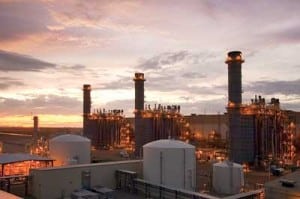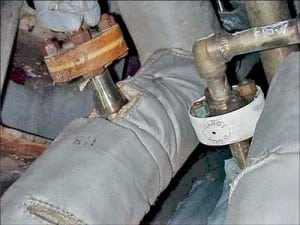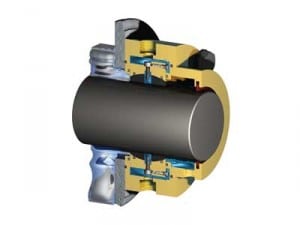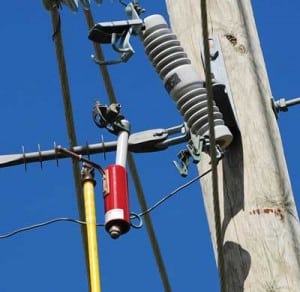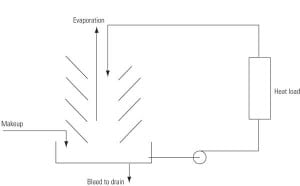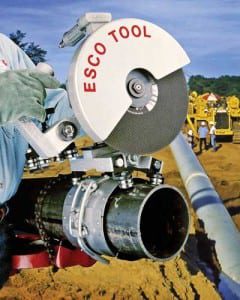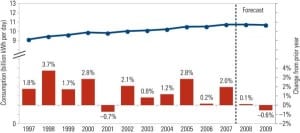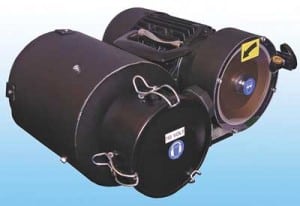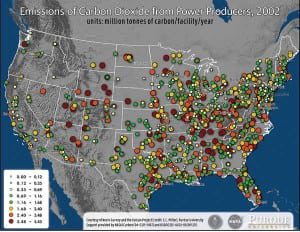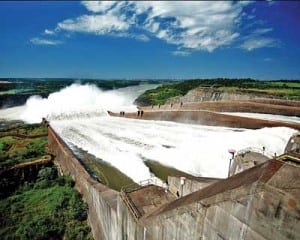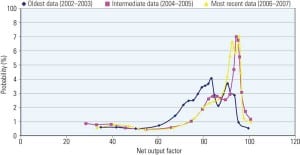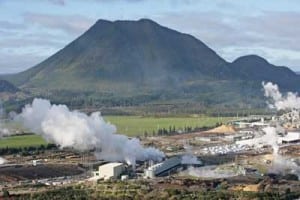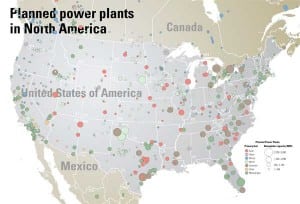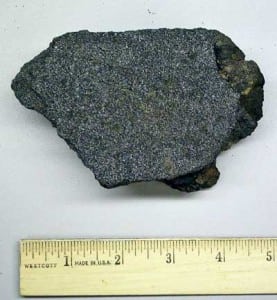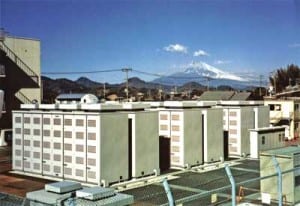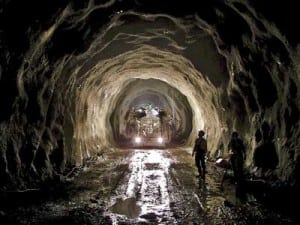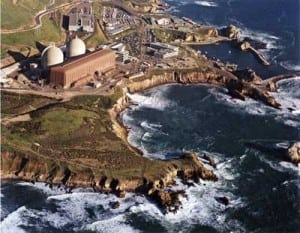In This Issue
-
Instrumentation & Controls
Upgraded Control System Adds to Merchant Plant’s Bottom Line
If the rotating equipment and boiler are a plant’s brawn, then a control system that efficiently integrates myriad plant functions is its brains. Luckily, in a power plant, we can perform a brain transplant when the control system becomes unreliable or too costly to maintain. But first, you have to justify that surgery.
-
Business
Training the Next Generation of Welders
Concern about the shortage of skilled workers for the energy industry has grown considerably over the past few years. Most discussions have focused on the shortage of engineers, but recently concerns about the scarcity of technical crafts have arisen as well.
-
News
Resin-Bonded Filter Cartridges Maximize Performance
Resin-Bonded Filter Cartridges Maximize Performance Pentair Industrial has introduced its Resflex Series Resin Bonded Filter Cartridges, with a unique, proprietary two-stage design. The cartridges’ outer spiral wrap efficiently removes large particles and agglomerates. This prefilter wrap provides increased surface area and intensifies cartridge strength, while eliminating residual debris. Resflex’s inner layers provide superior particle removal […]
-
O&M
Stopping Natural Gas Leaks
Chances are you have endured the tedious process of removing fuel piping when maintaining just about any gas turbine, especially aero-derivative engines that are usually swapped out rather than repaired in place. One of the most time-consuming jobs after reassembling the fuel piping is checking for leaks at all the flanges. In a large frame-size turbine, that means sealing up to 64 flanges and then removing the seals after the leak testing.
-
Commentary
Meeting the Global Energy Challenge
Meeting growing energy demand while reducing greenhouse gas (GHG) emissions is one of the most critical challenges facing our world today.
-
O&M
Improving Workforce Connectivity
Wright-Hennepin Cooperative Electric Association (WHCEA) is an electric distribution utility located in Rockford, Minn., that has been serving Wright County and western Hennepin County near Minneapolis with electricity since 1937. WHCEA is a not-for-profit, member-owned energy and service cooperative dedicated to enhancing the quality of life of its members and providing reliable services. Its field operations department consists of 35 fleet members who focus on building and maintaining electric power lines.
-
News
New Year’s Resolutions
Why is it that so many of our New Year’s resolutions are focused on self-enrichment, yet they are the first promises we break? The typical resolutions — "get more exercise" or "stop smoking" — are recycled yearly. Surveys find that most resolutions are abandoned or forgotten by, appropriately, Ground Hog Day. I believe it’s time to reboot our resolution-setting software and refocus on others instead of ourselves.
-
News
New Shaft Design Eliminates Leaks
Conventional pump mechanical seals, lip/contact seals, and packing as sealing methods work well when you’re pumping clean liquids, but operators eventually find shaft fretting and wear on the sleeves and shaft when pumping high-solids liquids. To solve this problem, Inpro/Seal Co. recently released its new Water Mizer Shaft Seal, which uses water to maintain the […]
-
Business
POWER Digest, January 2008
News items of interest to power industry professionals. GE Hitachi Nuclear Trade Delegation to India Postponed. In late November, GE Hitachi Nuclear Energy (GEH) announced that its president and CEO, Jack Fuller, would lead a 50-member U.S. trade mission to India Dec. 2–9. It was to be the first civilian nuclear energy delegation to visit […]
-
News
Safely Replace Blown Fuses
HD Electric Co.’s new FT-1 Fuse Tool assists in the removal and installation of most cutout-type overhead fuse links. The Fuse Tool has a 7-inch fuse receiver that provides increased safety and greater control by keeping the fuse link securely in place during removal and installation. The built-in switch hook is then used to close […]
-
O&M
Conserve Water by Improving Cooling Tower Efficiency
Though an abundant supply of freshwater has been taken for granted in many parts of the world, its availability is becoming less certain, even in North America. Water is a valuable resource and commodity that needs to be efficiently managed to minimize waste, reduce energy consumption, and control cost, especially for power generation. The industry must respond by seeking out more efficient ways to use water, such as by implementing water recycling and reuse strategies, especially for critical equipment like cooling towers.
-
News
Pneumatic Saw Goes from 6 to 60
A pneumatic saw and universal pipe trolley kit that eliminates the need for heavy, clamshell saws for cutting all types of alloys and concrete-lined pipe are available from ESCO Tool of Holliston, Mass. The Esco APS-438 Air-Powered Saw and WrapTrack let users cut 6-inch to 60-inch outer-diameter pipe accurately without a heat-affected zone and are […]
-
Legal & Regulatory
Is a Green Future Realistic with an Economy in the Red?
California Governor Arnold Schwarzenegger recently signed an executive order expanding the state’s renewables portfolio standard (RPS) requirement to 33% by 2020. The executive order formalizes what has been generally assumed for some time: A 33% RPS requirement will be needed for California to achieve its ambitious greenhouse gas (GHG) emissions reduction goals.
-
News
Combustible Gas Detector
With its advanced point infrared combustible gas – sensing element, the new Model IR400 Infrared (IR) Point Combustible Gas Detector from General Monitors delivers reliable protection against explosive hydrocarbon gases with a low-power (4.8 W) design that requires no routine calibration. The detector measures the absorption of infrared radiation passing through a volume of gas […]
-
Gas
2009 Industry Forecast: New Power Politics Will Determine Generation’s Path
The U.S. power industry’s story in 2009 will be all about change, to borrow a now-familiar theme. Though the new administration’s policy specifics hadn’t been revealed as POWER editors prepared this report, it appears that flat load growth in 2009 will give the new administration a unique opportunity to formulate new energy policy without risking that the lights will go out.
-
News
Improved Tungsten Electrode Grinder
Tungsten inert gas and plasma welding require tungsten electrodes with perfectly ground and polished tips. The improved Techweld TEG – 3 Tungsten Electrode Grinder, from British company Huntingdon Fusion Techniques Ltd. uses a diamond wheel to grind tungsten electrodes longitudinally and produce the same tungsten points every time. This prevents arc flicker or wander caused […]
-
Business
2009 Industry Forecast: A Challenging Year Lies Ahead
The power industry will be challenged in the coming year to chart its strategic direction and meet investor expectations, although business conditions should take a turn for the better going into 2010.
-
Coal
CO2 Source and Sink Tracking Improving
Many opponents of climate change policies and regulations argue that it is unfair to penalize some sectors — like power generation — more heavily than others when it’s difficult to prove precisely where specific greenhouse gas (GHG) emissions are coming from, where they’re going, and what effect they are having. Toward the ends of scientific understanding and sound public policy, scientists are making progress in isolating GHG sources and sinks.
-
Nuclear
The Race to Commercialize Mini–Nuclear Reactors
Though the resurgence of interest in nuclear power in recent years has spurred development of an assortment of reactor designs, emphasis has mostly been on those with capacities to produce thousands of megawatt-hours of baseload power, as is the case with designs from General Electric, AREVA, Westinghouse, and Mitsubishi that are under active review by the U.S. Nuclear Regulatory Commission (NRC). Power projects using any of those designs will be developed at the cost of many billions of investment dollars.
-
Hydro
Brazil Approves Hotly Contested Construction of Amazon Dam
In an effort to more than double its power capacity by 2030, the Brazilian government in November approved construction of a controversial $3.9 billion hydroelectric dam on the Madeira River, in the Amazon. When completed in 2013, the Jirau hydroelectric plant could add 3,300 MW to the country’s already massive 59 GW hydroelectric capacity.
-
O&M
2009 Industry Forecast: Existing Generating Assets Squeezed as New Project Starts Slow
Most forecasting reports concentrate on political or regulatory events to predict future industry trends. Frequently overlooked are the more empirical performance trends of the principal power generation technologies. Solomon & Associates queried its many power plant performance databases and crunched some numbers for us to identify those trends.
-
Geothermal
New Zealand Geothermal Station Opens
New Zealand’s biggest geothermal energy project in 20 years was officially opened in Kawerau in late November. The state-owned Kawerau Geothermal Station (Figure 5), on the North Island, adds 100 MW to the national grid.
-
Business
Planned Power Plants in North America
Courtesy: Platts Data source: Platts Energy Advantage and POWERmap. All rights reserved.
-
Waste to Energy
Landfills: From Trash to Treasure
The U.S. Environmental Protection Agency (EPA) has described landfills as an “effectively untapped resource” for renewable energy. The agency estimates that landfills are the source of about 12% of global methane emissions. (Methane is about 21 times more powerful as a greenhouse gas than CO2.) The EPA estimated that there were some 1,000 projects around […]
-
Coal
A Fresh Look at Coal-Derived Liquid Fuels
Thirty-five percent of the world’s energy comes from oil, and 96% of that oil is used for transportation. The current number of vehicles globally is estimated to be 700 million; that number is expected to double overall by 2030, and to triple in developing countries. Now consider that the U.S. has 27% of the world’s supply of coal yet only 2% of the oil. Coal-to-liquids technologies could bridge the gap between U.S. fuel supply and demand.
-
Wind
Banking Wind
This spring, Xcel Energy, along with state and technology partners, is set to test what the utility says is the first battery capable of storing wind energy. The ability to store energy from renewable generation sources with variable output is key to maximizing the value of renewable power in general and to Xcel’s “smart grid” plans in particular.
-
Nuclear
Patchy Progress in Europe with Radioactive Waste Management
The future of high-level nuclear waste disposal at Yucca Mountain remains uncertain as a new U.S. administration considers its nuclear agenda. The European Union’s policies remain just as unsettled. With new projects under construction in several countries and a nuclear ban in effect in others, no unified long-term storage approach is in sight.
-
Water
Invasive Species and Water Intakes
On October 21, a mass of basketball-sized jellyfish managed to accomplish what activists of every stripe had failed to do: Abruptly shut down Pacific Gas & Electric Corp.’s (PG&E) 1,118-MW Diablo Canyon Unit 2 reactor in San Luis Obispo County, Calif. (Figure 8).


